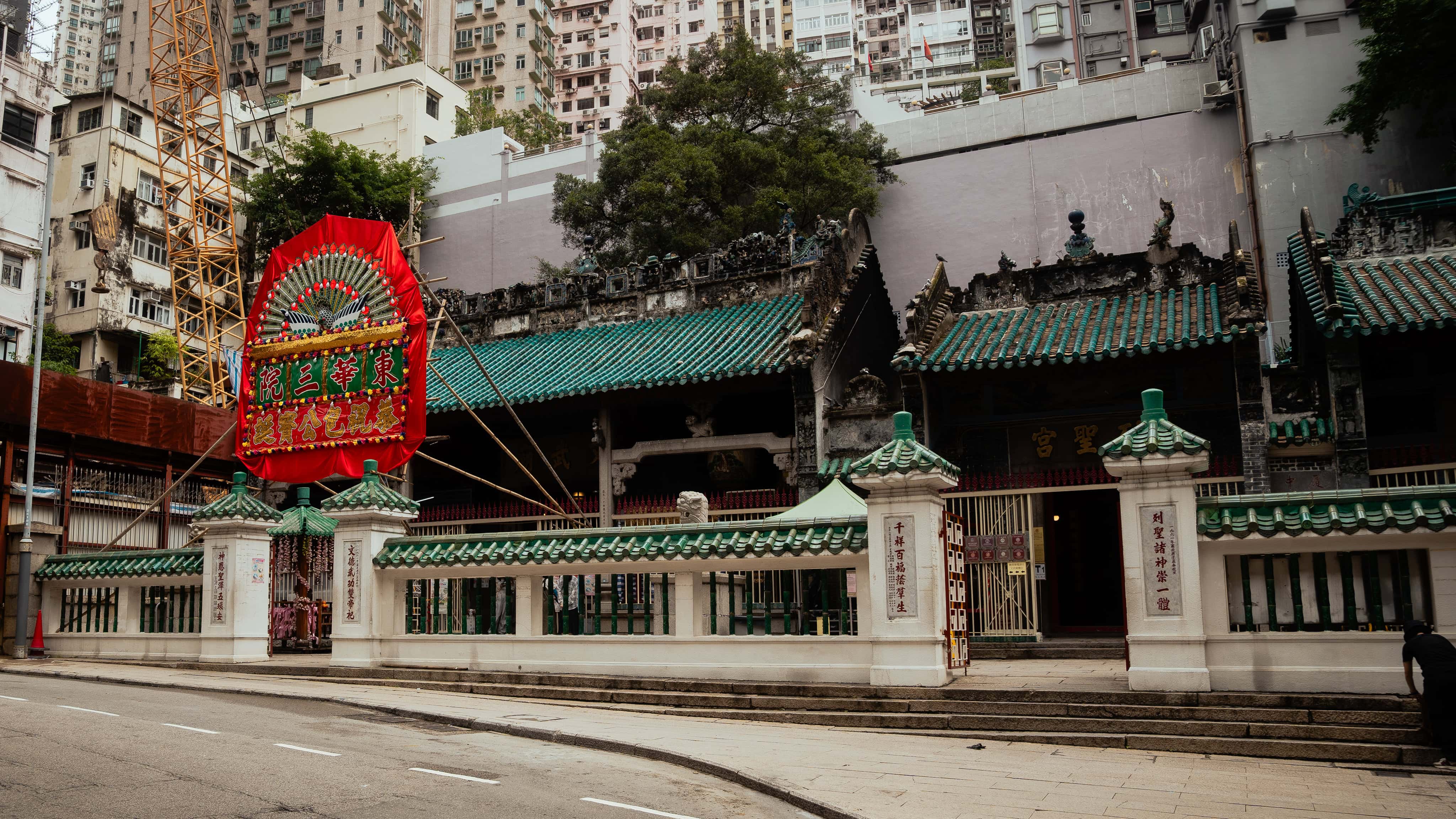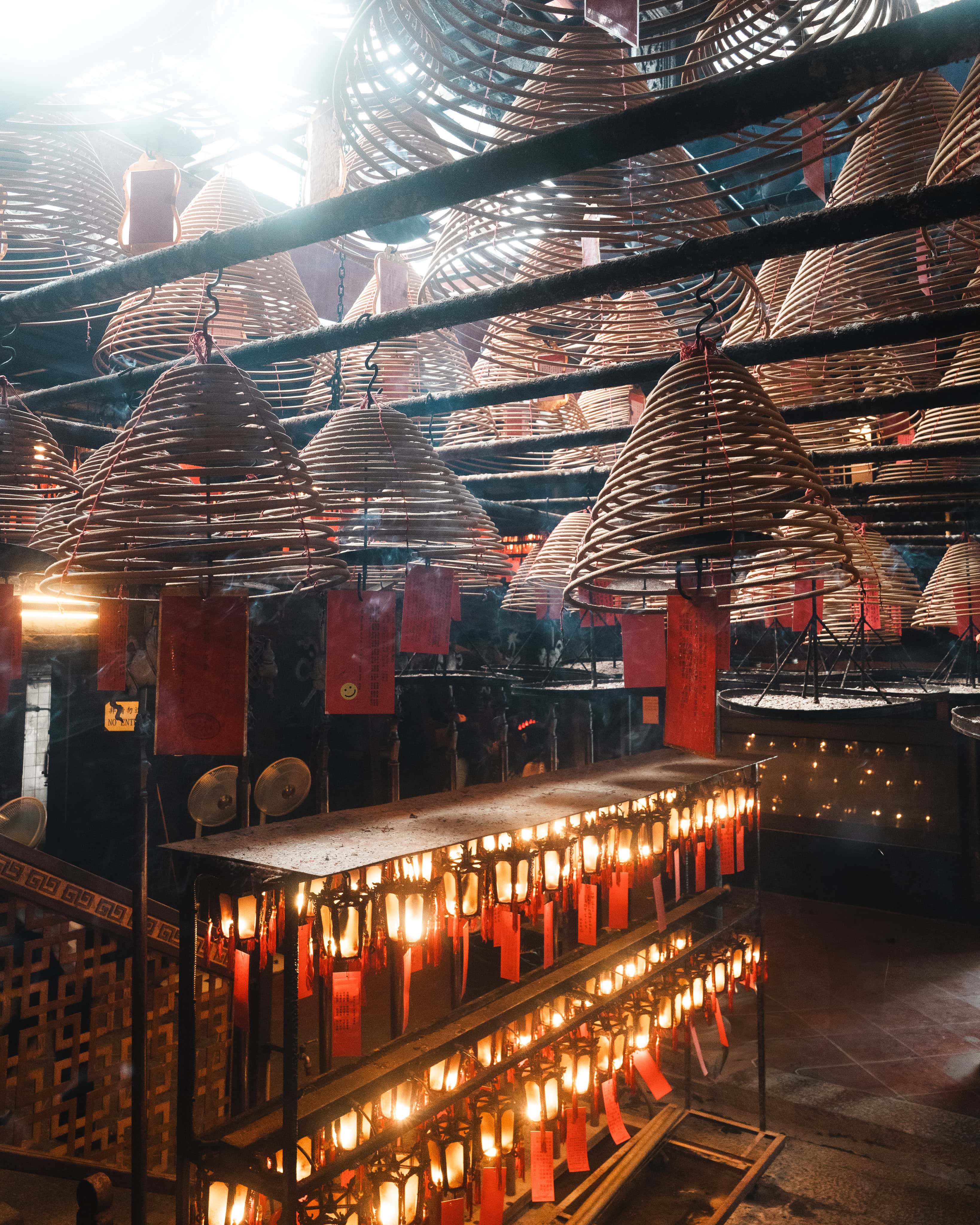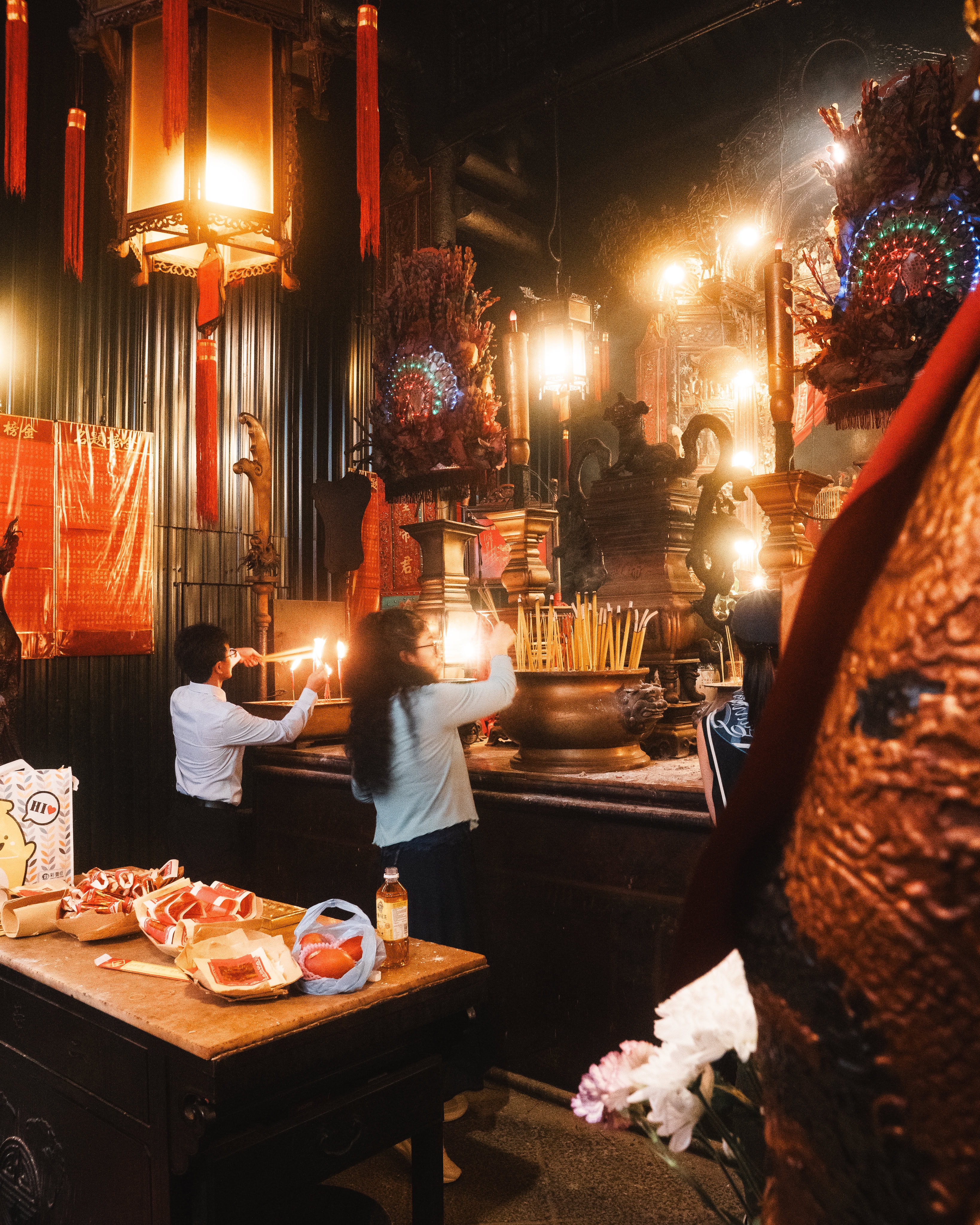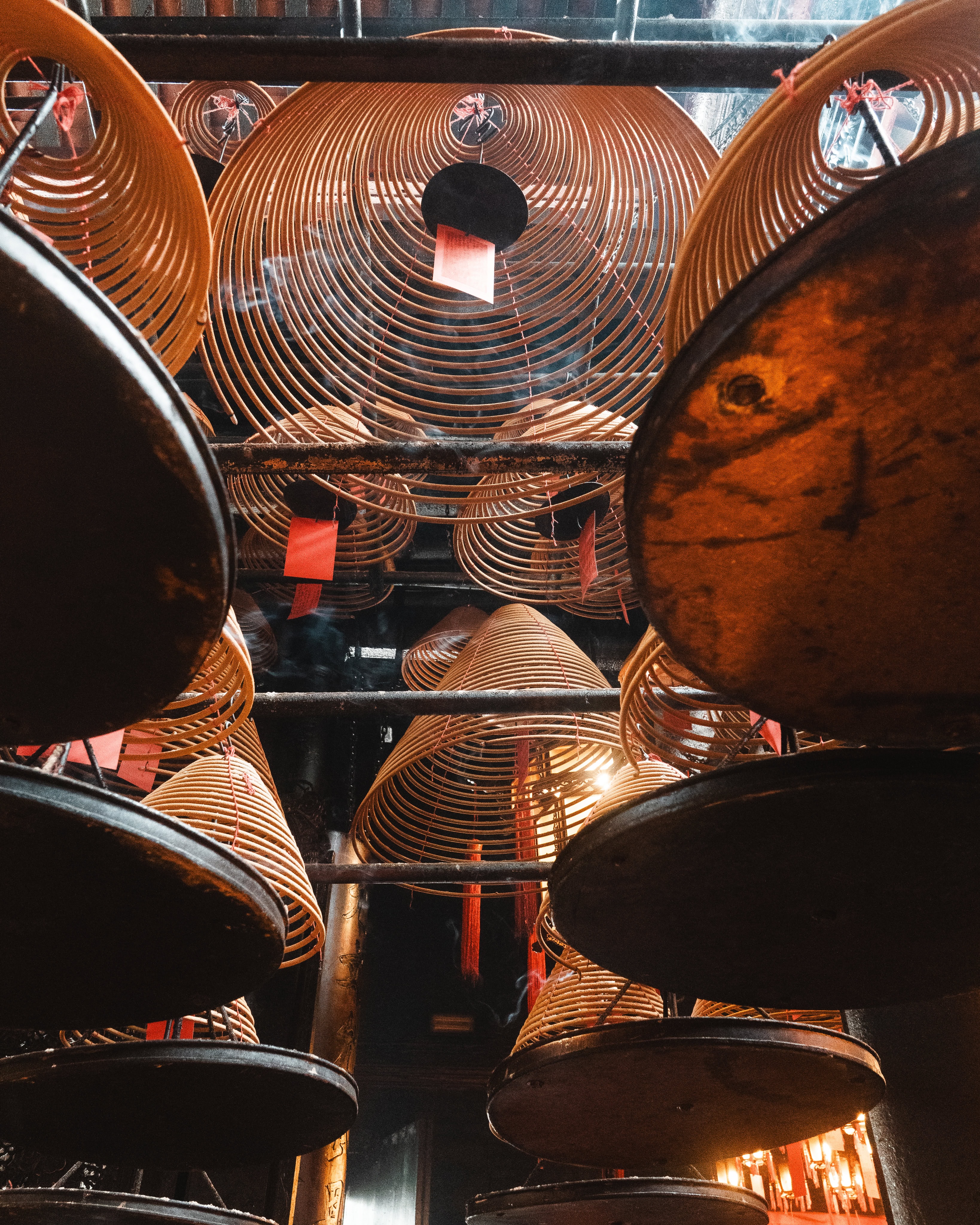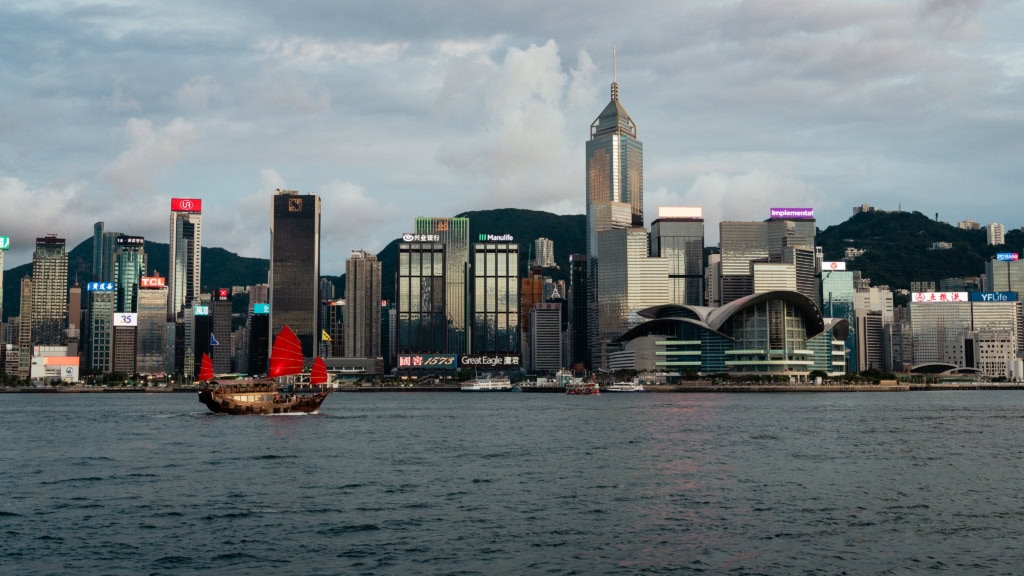In the midst of Hong Kong Island’s hustle and bustle, the Man Mo Temple offers tranquillity and spirituality. Surrounded by modern skyscrapers and everyday urban life, this historic temple offers visitors a fascinating glimpse into traditional Chinese culture. As one of the city’s oldest and most important Taoist temples, it attracts believers and culturally interested travellers alike.
Location and accessibility
The Man Mo Temple is centrally located on Hollywood Road in the Sheung Wan district of Hong Kong Island. This neighbourhood is one of the oldest and most historically significant parts of Hong Kong. It is renowned for its blend of colonial architecture, antique shops, and contemporary art galleries. The temple is easily accessible by public transport: The nearest MTR station is Sheung Wan (exit A2), and it is only a few minutes’ walk from there. Alternatively, you can take the historic double-decker tram (‘Ding Ding’), which runs directly along Hollywood Road. Thanks to its central location, the temple is an ideal stop on a tour of western Hong Kong.
History of the Man Mo Temple
The Man Mo Temple was built in 1847 by wealthy Chinese businessmen during the early British colonial period. It is one of the oldest temples in Hong Kong and is now one of the city’s most important Taoist shrines. The temple was built in honour of two Taoist deities: Man Cheong (also known as Man Tai), the god of literature; and Mo Tai (also known as Mo Tsz), the god of war. Man Cheong, also known as Man Tai, is the god of literature, while Mo Tai, also known as Mo Tsz, is the god of war. They both symbolise important values for society at the time: education and courage. At a time when the Chinese population wanted to preserve their cultural identity in a colonial environment, the temple served not only religious purposes, but also served as a meeting place for local communities, judges, scholars, and merchants.
Architecture and atmosphere
The temple is impressive, boasting traditional Chinese architecture with curved tiled roofs, artistic wooden beam carvings and colourful reliefs. The dark, mysterious interior is particularly striking. The air is filled with the scent of hundreds of incense spirals hanging from the ceiling and slowly burning. These symbolise the prayers of the faithful ascending to heaven. Visitors can purchase their own incense spirals and personalise them with their wishes. Typical red and gold offerings, such as fruit, paper money and incense sticks, are also present everywhere.
The temple complex comprises several connected buildings. As well as the main temple dedicated to Man and Mo, there are smaller shrines dedicated to other Taoist deities, including the Goddess of Mercy (Guan Yin) and Pak Tai, the god of the north. All the altars are richly decorated with gilded figures, offerings, and votive tablets.
Cultural significance, rituals and customs
The Man Mo Temple is much more than just a tourist attraction; it is an active religious centre that is still visited by worshippers today, particularly students hoping for success in their exams. The temple symbolises the connection between traditional Chinese values and modern-day Hong Kong. It is a listed building and has been categorised by the Antiquities and Monuments Office (AMO) as a Category I historic building, identifying structures of exceptional cultural significance that warrant special protection.
Visitors can observe Taoist rituals in practice during a visit to the temple. Worshippers light incense sticks, kneel in front of the altars, and throw ‘jiaobei’ — crescent-shaped wooden discs used to ask the gods yes-or-no questions.
Opening hours and admission
The temple is usually open daily from 8 am to 6 pm. Admission is free, but donations are welcome. As it is an active place of worship, visitors should dress respectfully and keep quiet. Photography is permitted, but please do not disturb those who are praying.
The Man Mo Temple is an authentic example of Hong Kong’s cultural heritage and spiritual diversity. As one of the city’s oldest religious buildings, it provides fascinating insights into Taoist faith, Chinese temple architecture, and Hong Kong’s cultural identity during a period of upheaval. For travellers wanting to experience more than just the modern skyline, a visit to the temple is an unforgettable highlight, offering a wealth of history, symbolism and atmosphere.

